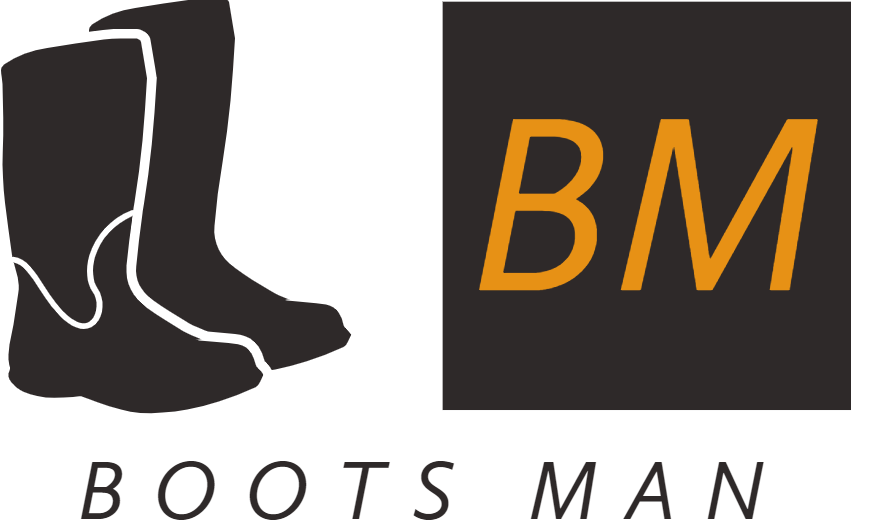Are you struggling to find the best work boot for your feet? Don’t worry, you’re not alone.
In this guide, you’ll learn how to make sure your orthopedic work boots fit correctly, so that you can stay safe and comfortable on the job. Keep reading to discover how you can find the right fit for your feet!
This guide provides an overview of the most important factors to consider when choosing the right orthopedic work boots for your feet. It will also provide a helpful sizing chart for correctly finding your boots size and fit, as well as some tips to keep in mind when purchasing your Work Boots.
At the same time, it’s important to note that all shoes with wide toe boxes, cushioning and arch support are not necessarily orthopedic work boots – they may just offer superior comfort and foot protection. With that in mind, there are several key features you should look for when selecting a pair of orthopedic work boots. These include:
-A supportive midsole: A supportive midsole helps ensure that your feet have an adequate amount of cushioning and arch support so that you can move around without pain, fatigue or strain. Many high-quality orthopedic work boots will have a dual-density EVA (ethylene vinyl acetate) foam midsole for maximum durability and superior cushioning.
-Steel toe protection: Steel toe protection is essential if you’re working in hazardous environments such as construction sites, factories or warehouses. Look for steel toes with reinforced overlays and abrasion resistant toe guards to protect your toes from sharp objects or falling debris.
-Slip resistant outsoles: Slip resistant outsoles are necessary if you often come into contact with wet surfaces on the job site. Opt for rubber outsoles with deep treads and multi-directional lugs to maximize traction and prevent slips or falls while on the job.
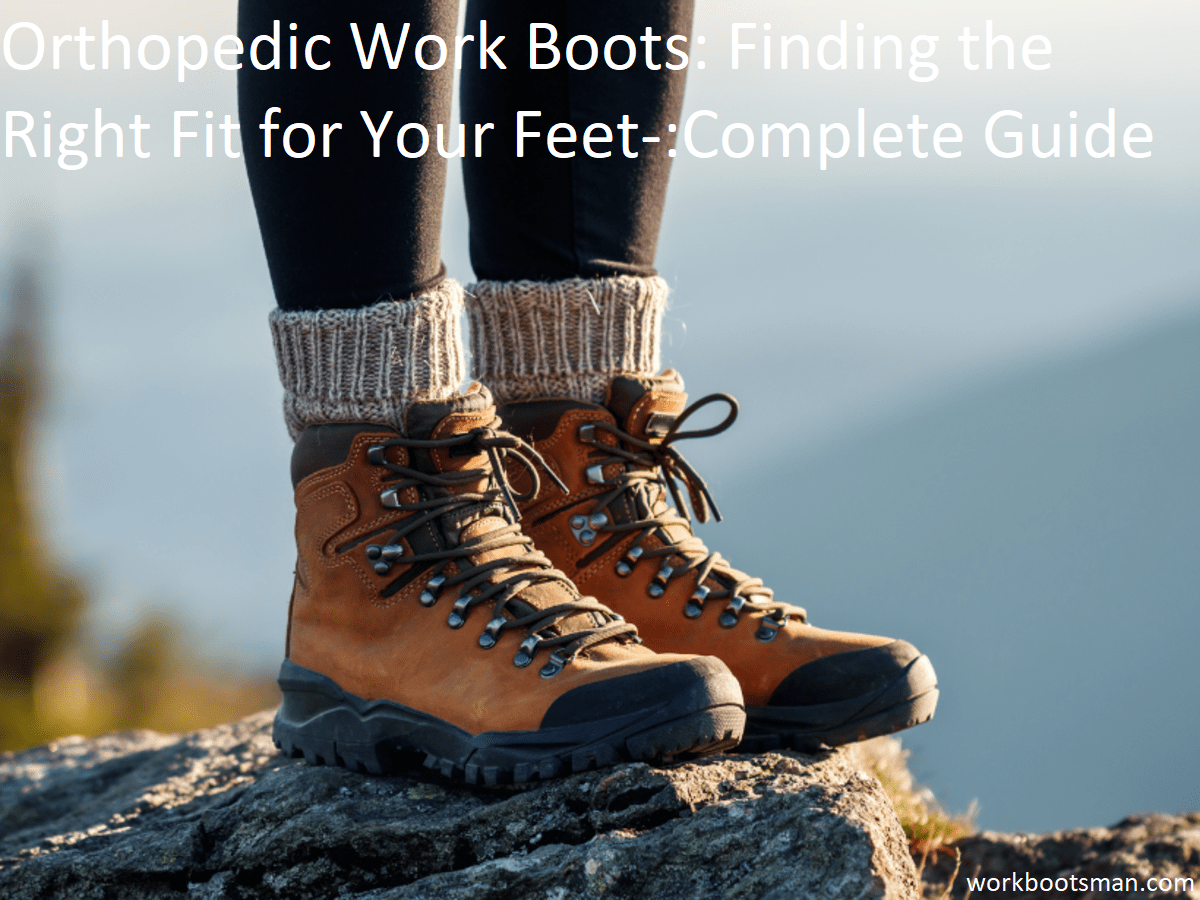
Understanding Orthopedic Work Boots
Orthopedic work boots are designed to provide both comfort and support for those who need it. The most critical aspect of selecting the right orthopedic work boot for you is finding an appropriate fit.
It is important to understand what type of fit you may be looking for in an orthopedic work boot as there are a variety of styles available and each has its own unique specification. Some common orthopedic shoe requirements include extra cushioning, arch support, heel counter stiffness level, and width sizing.
It is important to understand why these specifications matter when it comes to finding a properly fitting pair of shoes so that you can avoid foot pain or worse long-term effects due to improper footwear. Additionally, we will look into what specific types of conditions or characteristics might lead someone to require orthopedic work boots in order to best protect their feet from further damage.
Features of orthopedic work boots
Choosing the right orthopedic work boots is essential for protecting your feet from injury and keeping you comfortable throughout the day. Orthopedic work boots differ from regular work boots in that they are specifically designed to provide additional comfort, support, and protection by featuring deep cushioning, durable gripping outsoles, and similar features.
When it comes to buying orthopedic work boots, there are a few key features you should look for to ensure you have the right fit.
Arch Support: Arch support helps stabilize your foot when walking or standing for long periods of time and can prevent muscle strain or injury. Orthopedic work boots will generally come with extra arch support cushioning, so if possible try on a pair to make sure it fits comfortably in the arch of your foot.
Padded Tongue: A padded tongue in a boot will provide more cushioning around your foot while also helping keep out dirt and debris that may get inside the boot itself. This can be especially beneficial if you plan on wearing them all day as it will help prevent any blisters forming on the sides of your feet due to rubbing or chafing against the laces or inner lining of the boot.
Heel Cushion: Heel cushioning helps absorb shock when walking on hard surfaces such as concrete which can help reduce pain in your feet while standing or working all day long. Look for an orthopedic boot that has extra cushioning in the heel area, particularly if you’re looking for extra comfort during activities such as construction work or running errands around town.
Wide Toe Box: The toe box is important both for getting enough wiggle room inside the boot but also preventing your toes from being crushed together after extended periods of wear. If possible try out a few pairs with different widths until you find one that provides enough space between each toe without sacrificing other elements like arch support or cushioning underfoot.
Materials used in orthopedic work boots
Orthopedic work boots offer the wearer stability, arch support and protection from hazardous work environments. When it comes to finding the right pair for your feet, the materials used need to be taken into consideration. Depending on what kind of environment you are working in and how you will use them, different materials may be better suited for your needs.
Leather: Leather is one of the most common materials used in orthopedic work boots because it is a very durable material that has great strength and abrasion resistance. It is also breathable, making it a good option for keeping your feet cool in hot working environments.
Synthetics: Synthetic materials such as nylon or polyester may also be used in orthopedic work boots. These materials are generally more lightweight and flexible than leather, which makes them ideal for workers who are doing jobs that require a lot of movement or physical labor.
Rubber: Rubber is another material often used in orthopedic work boots because it provides excellent slip resistance on slick surfaces. It is also resistant to water and oil, which makes it ideal for wet or oily working conditions.
EVA (Ethylene Vinyl Acetate): This is a soft foam-like material that provides cushioning and comfort while providing shock absorption when walking or standing for long hours on hard surfaces. It is also lightweight and will not add excess weight to the boot, making it an excellent choice for workers who need added comfort but don’t want an overly bulky boot design.
Benefits of orthopedic work boots
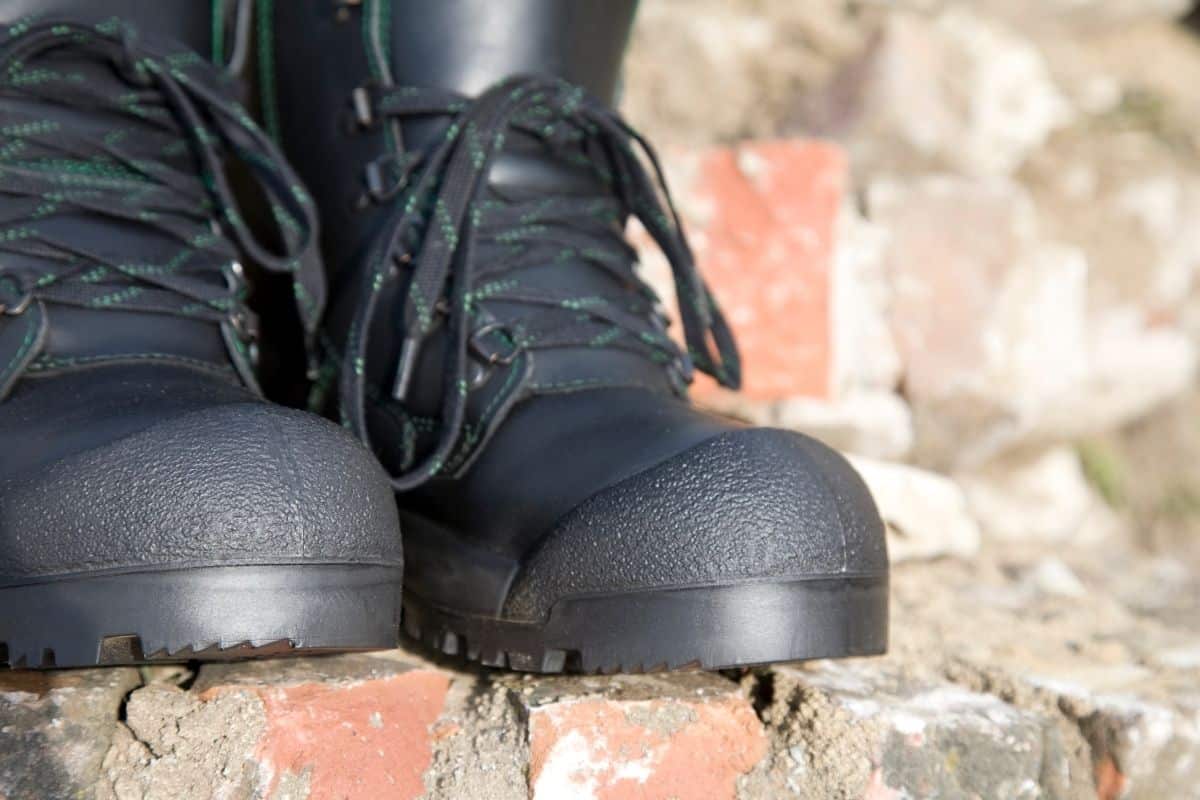
One of the primary benefits of orthopedic work boots is enhanced comfort and support for your feet. Many people suffer from chronic foot pain due to the strain and stress of their jobs, which can greatly reduce their productivity and enjoyment of life. Orthopedic work boots feature supportive padding, shock-absorbent cushioning, arch support, and durable construction that provide stability and comfort during long days on your feet.
In addition to increased comfort, these shoes can also reduce the risk of injury. Orthopedic work boots have ergonomic designs that evenly distribute weight across the foot instead of allowing it to concentrate in certain areas. This helps prevent soreness and fatigue while reducing the chances of experiencing a slip, trip or fall while on the job. The heftier construction materials used in orthopedic footwear also provide greater protection against weather exposure, moisture damage or contact with hazardous materials.
Factors to Consider When Choosing Orthopedic Work Boots
When you are in the market for orthopedic work boots that can accommodate your foot size or deformities, there are a few factors that should be taken into account in order to ensure you get the most out of your purchase. Below, we have outlined the key factors to consider when shopping for orthopedic work boots:
- Style: Depending on your job and whether or not you are cycling through wet or dry working conditions, you should opt for an appropriate style. Not all orthopedic boots come with steel toes and some may provide extra ankle support. You should also select an appropriate sole thickness that will maximize comfort and support.
- Fit: Orthopedic work boots will provide customized features specific to your individual measurements and even deformities such as bunions, crooked toes and narrow heels. It is essential to measure both feet for length as well as width in order to determine which size boot is most suitable for optimal fit.
- Adjustability: Many orthopedic work boots come with adjustable straps that provide a more personalized support system around the ankle, heel and arch area. Making sure these straps are easy enough to adjust on the fly can be a huge factor in helping prevent any future injuries from occurring on the job site.
- Breathability: In most cases, it is more beneficial to select breathable materials over less breathable materials as they tend trap less heat while also providing maximum ventilation throughout the day when wearing them. This can help avoid any unwanted perspiration build up and keep feet feeling fresh all day long.
Overall, if you require orthopedic work boots due to certain foot irregularities or deformities, it is important not only understand what features make up a great boot but also recognizing how different features can address various foot irregularities—ensuring you get a comfortable fit while providing long-term durability and protection onsite.
Arch support
Arch support is an important element to consider when selecting the right orthopedic work boots for your feet. It provides cushioning of the foot by spreading pressure over a wide area and it can also help reduce shock absorption. Orthopedic-style work boots are designed to provide cushioning and adjustable arch support to address issues with pronation, which is a common source of foot pain and fatigue.
To ensure you find the right level of arch support, you should choose a boot that offers adjustable lacing systems so that you can customize your comfort level. Many orthopedic work boots have anatomically shaped arch areas that provide natural flex points for the foot. Other options include multiple densities of EVA foam cushioning or foam padding on key pressure points, like the heel and ankle area. Additionally, some orthopedic works boots feature metatarsal support systems that allow independent adjustment in this area of your feet to enable better pressure distribution when walking or standing.
Sole type
The sole, or bottom of the work boot, is an important factor in finding the right fit and protection for your feet. Depending on the type of work you do and the environment in which you do it, the right sole can make all the difference between a comfortable day or hours of pain and soreness. Here are some general tips to consider when selecting a sole type:
Slip-Resistant Sole: If you work outdoors or on slick surfaces such as ice or snow, slip-resistant soles are essential. Most orthopedic work boots have this feature built in and provide good traction in wet or dry conditions. You may also want to look for boots with Vibram© rubber soles for even more cushioning and grip.
Footbed: The footbed is what sits between your foot and the midsole of your boot, providing additional cushioning and stability with every step. Look for a boot with a removable footbed with arch support that is also breathable to keep your feet dry throughout the work day.
Oil-Port Resistant Sole: Oil-resistance keeps oil from seeping into your shoes over time and stains from being left behind on surfaces where you wear them. If you are working in automotive repair shops or any industrial area that uses lubricants regularly, oil-resistant soles are a must to prevent slipping accidents due to spills.
Durability: You should also take into account how long boots usually last before they need replacing – both depending on frequency used as well as quality of make – so that you don’t have to buy new ones too frequently. There are certain materials that offer extra durability such as leather which can stand up to harsher surface conditions whereas other materials may be more lightweight but less durable over long periods.
Heel height
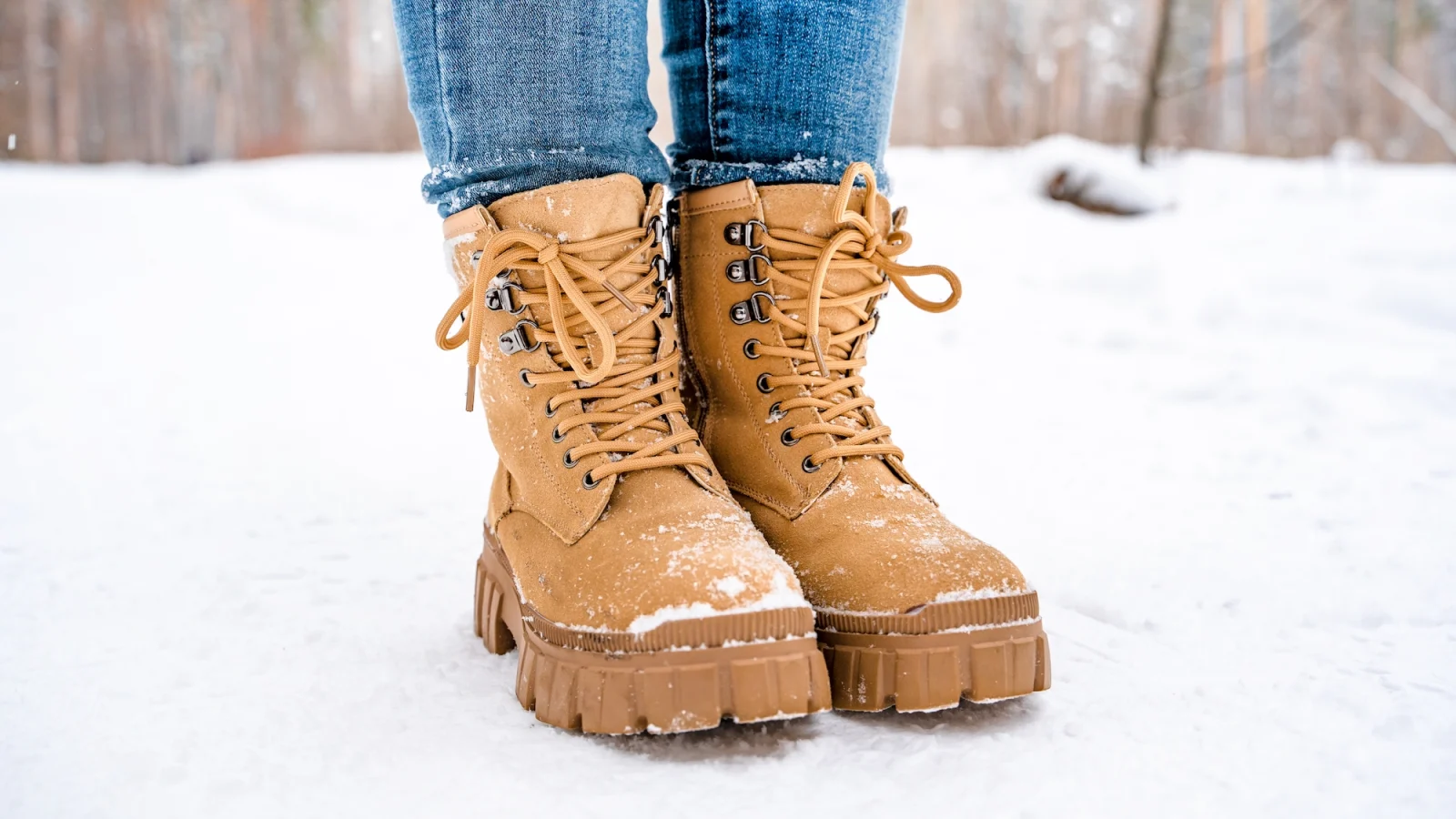
Heel height is an important factor to consider when choosing orthopedic work boots. Most industrial safety shoes have a short, one-inch heel which is designed to provide stability, comfort and protection for those who spend long hours on their feet in hazardous conditions.
This height gives the user more shock absorption than taller heels, making it easier for the feet to absorb sudden impacts from heavy items or hard surfaces. This also helps maintain balance as you move around a worksite, allowing smoother transitions between walking and running.
If you need extra cushioning for your feet, you may want consider a thicker sole on your boots.
Common Foot Problems and How Orthopedic Work Boots Can Help
Foot pain and injury is an unfortunately common problem for many workers, particularly those whose job responsibilities require them to stand for long periods of time. A variety of medical conditions and lifestyle factors can cause foot discomfort and even injury. There are several types of work boots that are designed to provide added arch support, cushioning, flexibility, and shock absorption—all necessary features to protect your feet from the rigors of your job.
Common foot problems that orthopedic work boots can help alleviate include:
-Plantar Fasciitis:This condition involves inflammation in the thick band of tissue near the bottom of your foot that connects your heel bone to your toes. It’s often caused by overuse or improper footwear and results in severe pain along the bottom of the foot, particularly in the morning upon arising or when standing after sitting for a long period. Orthopedic work boots can provide extra cushioning for this kind of extreme pain in order to ease pressure off afflicted areas.
-Supination: This is when pressure is placed on the outside edges of feet rather than evenly distributed along their entire length, which can cause arch pain. Orthopedic shoes usually have structure that provides extra stability on these points as well as extra arch support.
-Pronation: The opposite issue from supination, too much pressure on inside edges leading to improper weight distribution and corresponding pain throughout your body stemming from it. Orthopedic shoes help correct this problem through features such as thicker inner soles or specialized midsoles made with materials such as ABS plastic which redistribute weight more evenly throughout your gait cycle when you walk or run.
Plantar fasciitis
Plantar fasciitis is a common condition that can cause significant pain in the heel and arch of your foot. The plantar fascia is a band of tissue that runs over the sole of your foot, connecting your heel bone to the toes. When it becomes inflamed or irritated, it can cause severe pain and swelling.
Orthopedic work boots are designed with comfort and support in mind, making them perfect for those suffering from plantar fasciitis. When looking for a boot to alleviate the symptoms of plantar fasciitis, make sure to consider shoes specifically designed for this condition. Orthopedic work boots are made with arch support, cushioning and shock absorption features that provide relief from pain caused by this condition. The material used in these shoes should also be soft and breathable, to keep your feet cool and help reduce discomfort during long hours at work or at play. Additionally, look for soles with traction control so you don’t slip while you’re on the job or engaging in other activities.
Finally, take time to measure your feet properly so you can find orthopedic work boots that fit correctly and provide the right amount of support needed to reduce symptoms of plantar fasciitis. Keep in mind that finding a boot that feels comfortable while standing may not be as comfortable when walking – try taking a few steps before deciding whether you like the fit or not! This can greatly improve your chances of finding an orthopedic work boot that provides the right amount of coverage yet still gives you enough mobility for all-day comfort!
Bunions
Bunions can be a real concern for those wearing work boots, as this foot deformity can cause significant pain and discomfort. A bunion is a bony growth that develops on the side of the big toe, causing it to bend outwards towards the second toe. This results from an enlargement of the joint at the base of the big toe, and can result in pressure against the sides of your work boots.
When buying orthopedic work boots for bunions there are several things to look for:
- Ample Toe Box: Look for a roomier shoe with a wide toe box or enough room around your bunion area. Avoid work boots which are too pointed or overly narrow in this area.
- Soft Inner Lining: Choose shoes with soft linings that provide cushioning and prevent chafing while protecting your bunions.
- Balance and Stability Support: Make sure you choose shoes with plenty of support at the arch; extra cushioning can help to reduce stress on feet affected by bunions and other foot deformities. Look for ankle braces or removable insoles constructed from insulation materials that offer balance and stability while also providing comfort on stationary surfaces like concrete floors. Also, make sure your boot has good grip so it won’t slip when traversing slippery surfaces like construction sites or oil fields.
- Breathability: Look for breathable uppers made from leather, which will allow air drift and keep feet dry even when sweating is profuse; this will prevent moisture accumulation which could lead to fungus infections between toes where bunions might be present.
Flat feet
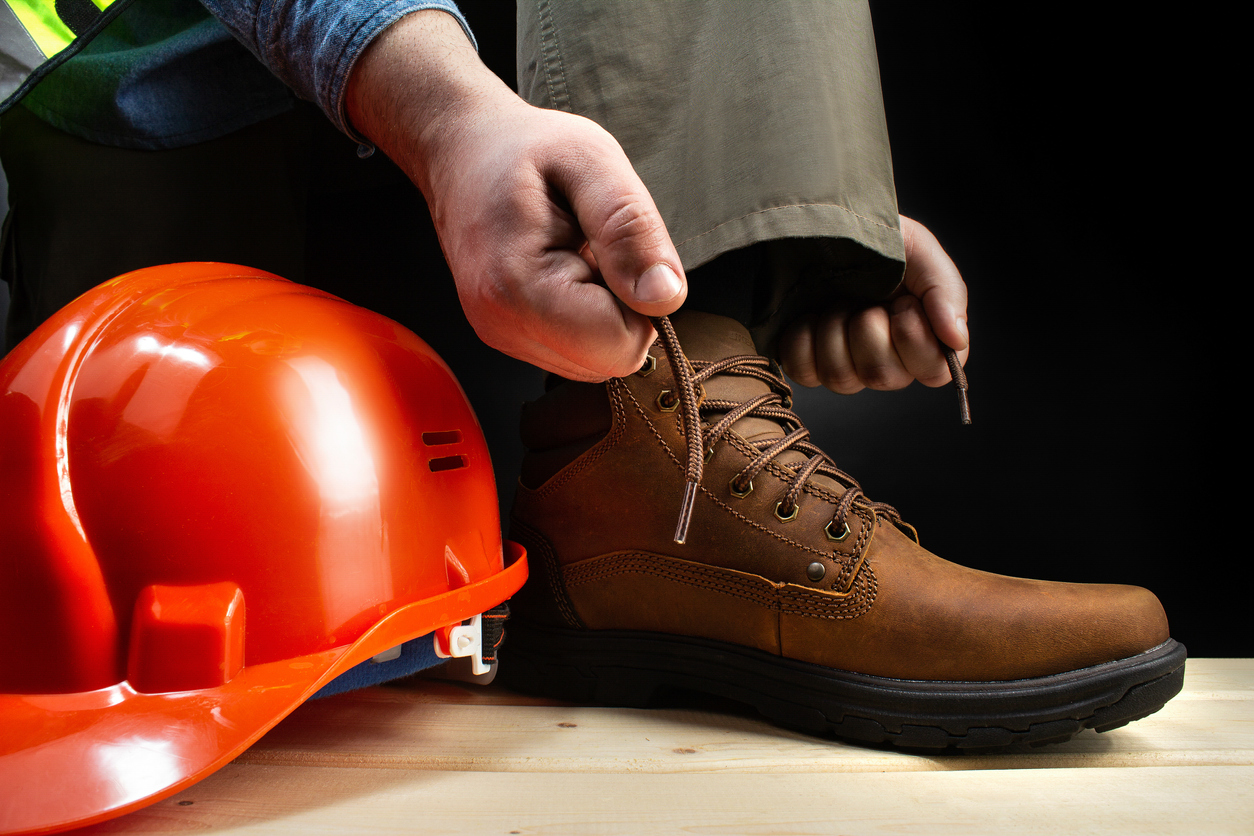
For people who suffer from flat feet, wearing the wrong type of shoes can lead to discomfort and pain during everyday activities. Orthopedic work boots are designed to provide comfort and support for those with flat feet, helping to prevent problems associated with over-pronation or having your foot roll inwards when walking.
To make sure you get the most out of your orthopedic boots, it is important to think about arch type when selecting a boot. Flat feet generally require more support than regular arches, as there is less natural cushioning in the sole area. When shopping for orthopedic boots, look for a pair that provides extra thickness in the insoles and midsoles of the boot—this will help prevent painful pressure points on your feet while you’re on the job.
Additionally, materials like leather provide extra firmness and rigidity to give your ankles more stability throughout the day. With a variety of modern styles available in widths ranging from narrow to extra wide, there are options available that enhance foot pain relief while still giving you an aesthetic look and feel that fits your needs.
Conclusion
In conclusion, finding the right work boot for you is an important decision that requires careful consideration — not only for your comfort and support but also for keeping your feet safe.
Consider the factors discussed above when shopping for work boots, such as fit, heel height, arch support, and traction. Additionally, consider whether steel toes are necessary and if so, choose a lightweight pair of boots to reduce fatigue in your legs.
Finally, take into account any additional features that may be beneficial to you such as water resistance or cushioning of soles to promote comfort. With the right shoes and proper foot care, you can look forward to many days on the job in comfort and security.
FAQs
How should work boots fit your feet?
Work boots should fit snugly around the entire foot, including the heel and instep, but should not be too tight or uncomfortable. The toe box should have enough room to wiggle the toes and the boot should provide ample arch support.
How do I find the right fitting boots?
To find the right fitting boots, measure your feet at the end of the day when they are at their largest. Try on boots with the socks you plan to wear while working and walk around in them for a few minutes. Make sure the boots feel comfortable and provide enough support for your feet and ankles.
Should work boots be a size bigger?
Work boots do not necessarily need to be a size bigger. It is important to find a size that fits properly and provides enough support for your feet.
How much room should your feet have in boots?
Your feet should have enough room to wiggle your toes and move freely, but not so much room that your feet slide around inside the boots. A snug fit with enough support is ideal.
Should you buy boots half size bigger?
Buying boots half size bigger can be an option if you have wide feet or plan to wear thick socks. However, it is important to try on the boots and make sure they fit properly before making a purchase.
Do you want work boots tight or loose?
Work boots should not be too tight or too loose. They should fit snugly around the entire foot while still providing enough room for your toes to move and your feet to breathe.
Should boots be tight at first?
Boots may feel tight at first but they should not be uncomfortable. Over time, the boots will break in and conform to the shape of your feet, becoming more comfortable with each wear.
Is work boot size the same as shoe size?
Work boot size is not always the same as shoe size. It is important to measure your feet and try on different sizes and styles to find the best fit.
How do I know my work boot size?
To know your work boot size, measure your feet at the end of the day when they are at their largest. Use a measuring tape or ruler to measure the length and width of your feet and compare the measurements to a size chart.
How is boot size calculated?
Boot size is typically calculated based on the length and width of the foot. Different manufacturers may use slightly different sizing charts, so it is important to try on boots and compare sizes before making a purchase.
See Also:
- Best carhartt work boots 2023
- Best carpenter work boots 2023
- Best cold weather work Boots 2023
- Best composite toe work boots 2023
- Best cowboy style work boots 2023
